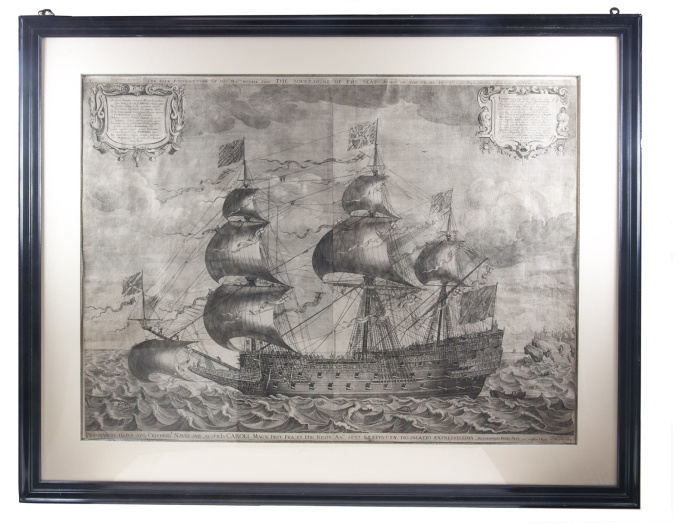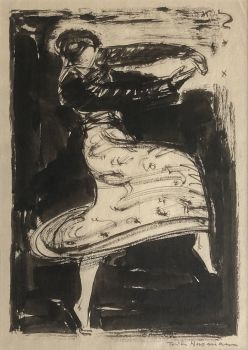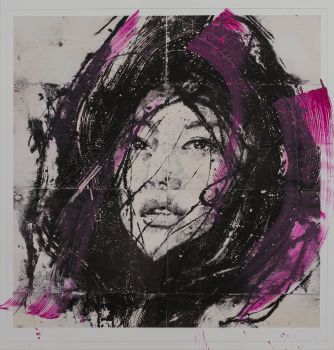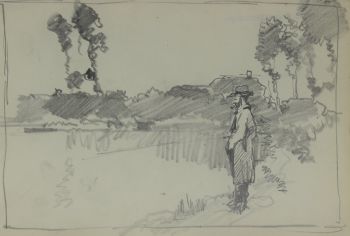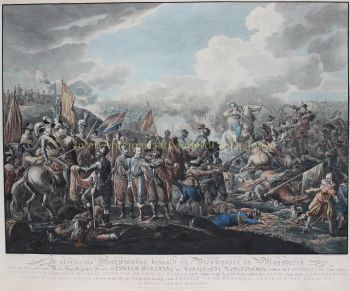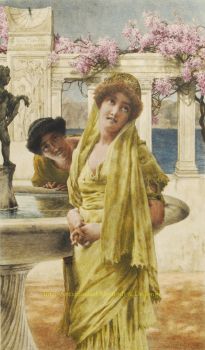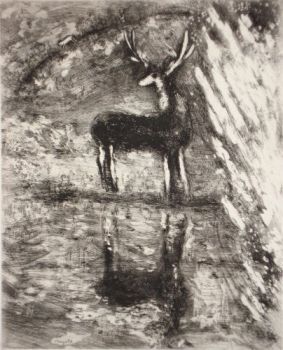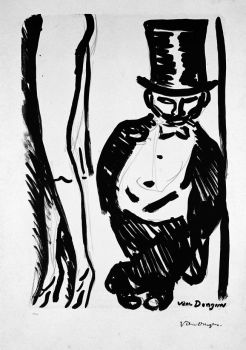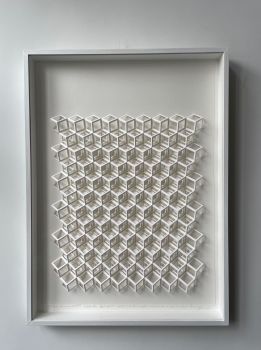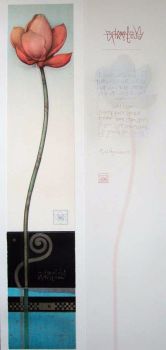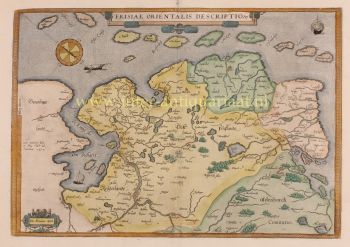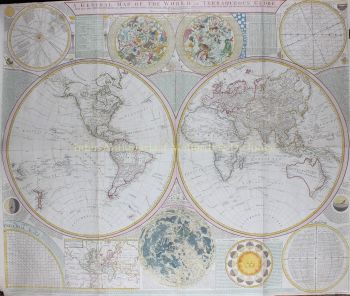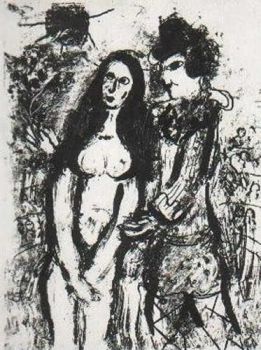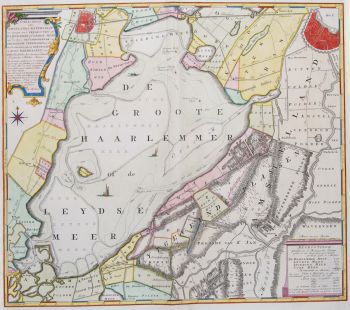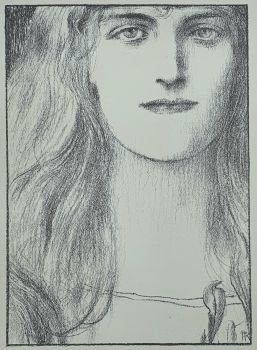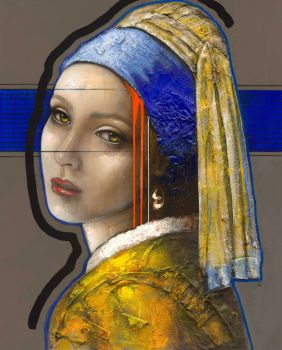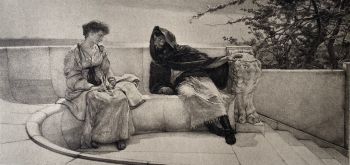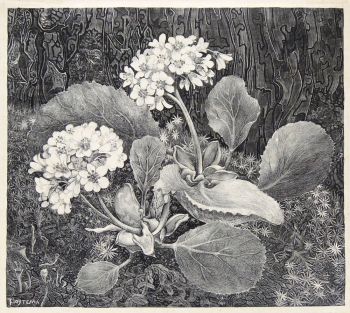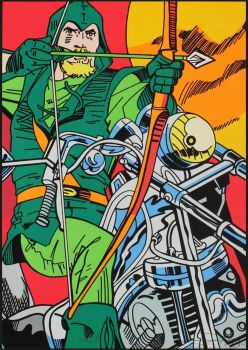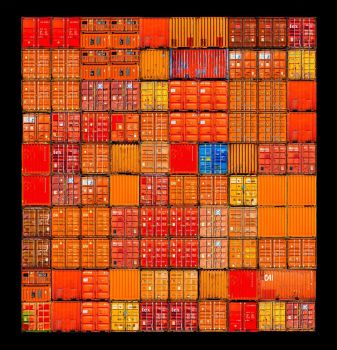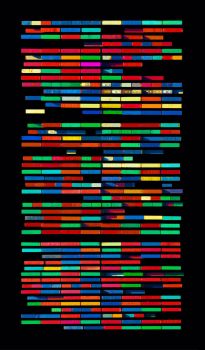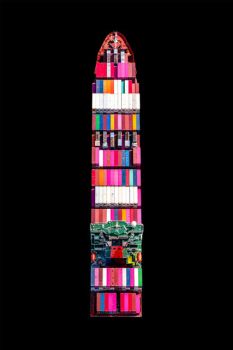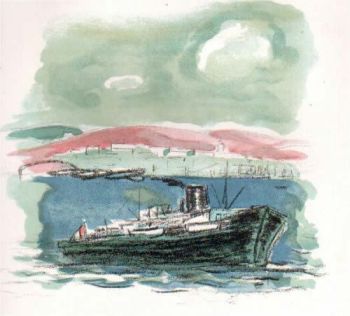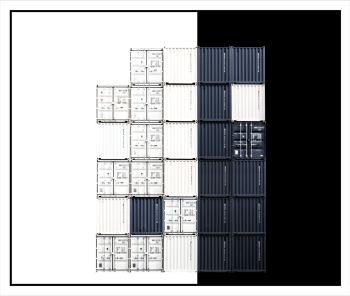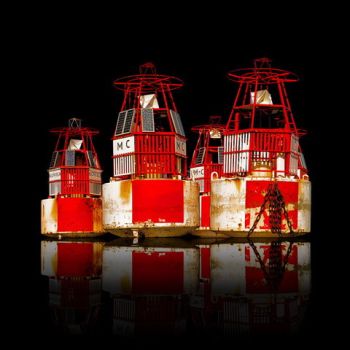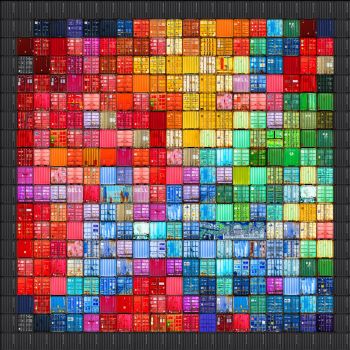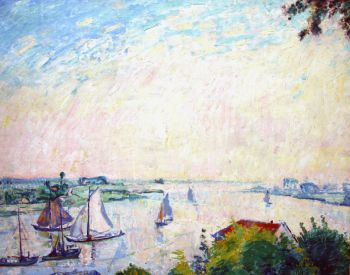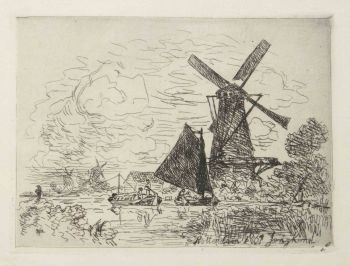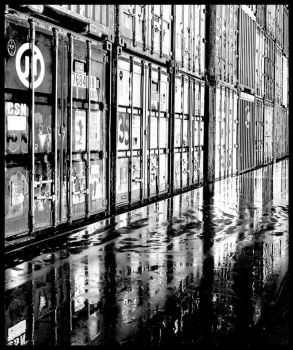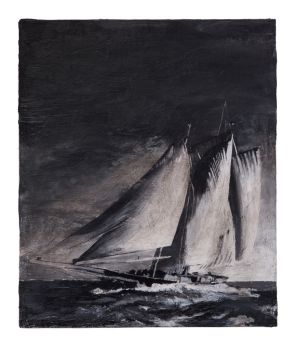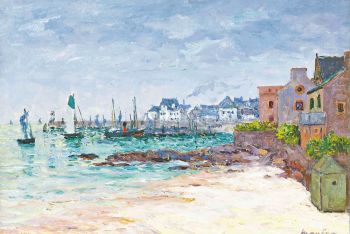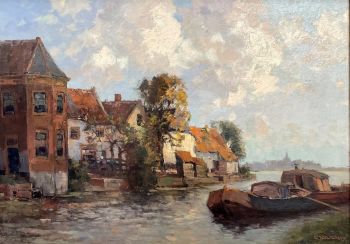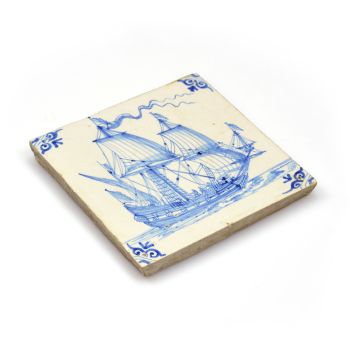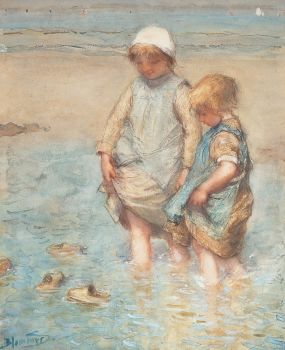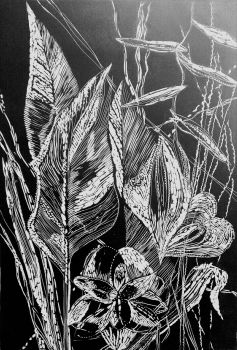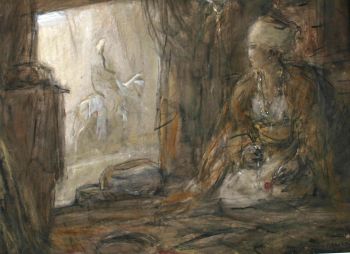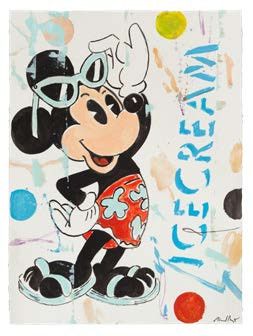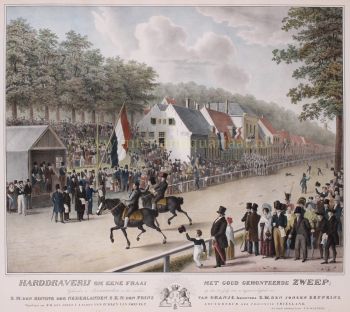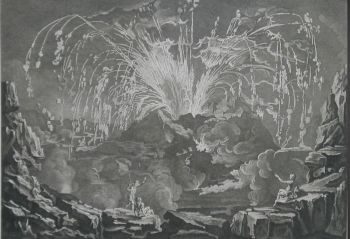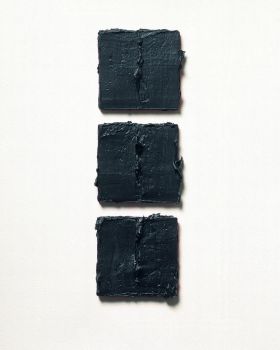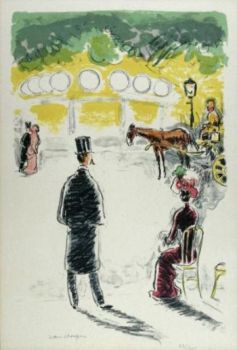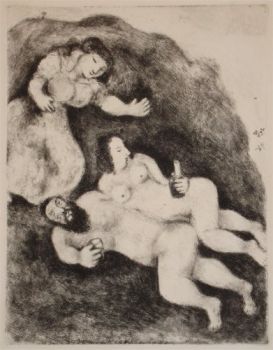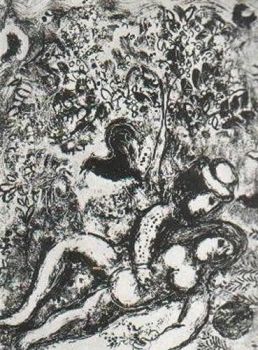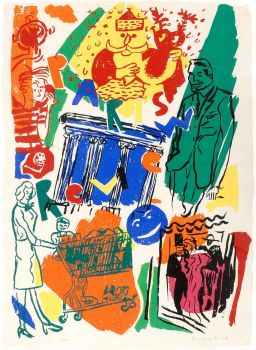Magnificent engraving of the 17th-century warship the “Sovereign of the Seas”, surpassing all her co 1637
John Payne
InkPaper
66 ⨯ 99 cm
Currently unavailable via Gallerease
- About the artworkThe true portraicture of His Ma[jes]ties. royall ship the Soveraigne of the Seas built in the yeare 1637.
[London, Peter Pett, 1637/38]. Large engraving (66.5 x 91 cm), printed from two plates on two sheets, assembled to make a single print. With title in English across the head, a slightly different Latin title across the foot (both outside the image area), Payne's name and privilege to the right of the Latin title, and two decorated cartouches with laudatory verses in the upper corners. In passepartout (not mounted) and easily detachable framed (90 x 114 cm).
Rare and magnificent engraving of the extraordinary 17th-century English warship the Sovereign of the Seas, shown in full sail, flying 5 flags and more than a dozen pennons. With her more than 1500 tons and more than 100 guns, she surpassed all her contemporaries in size and gun power and cost about ten times as much as an average naval gunship. Besides being "one of the best known naval prints belonging to the seventeenth century … extraordinarily rich of detail and of the greatest possible interest" (Chatterton), it is also by far the largest English engraved view to survive from the first half of the century. For the engraving, Payne had, most likely, access to the builder's draughts and plans and must have collaborated with Peter Pett for the engraving to be as representative of the ship as possible.
Trimmed to the printed image at the two sides, not always completely straight, a few small tears (mostly repaired) at the head and foot, a few tiny spots and a tiny blemish, but still generally good, very attractive and printed in a crisp impression.
BM online cat. 1854,0614.252; H. Busmann, Sovereign of the Seas (2002), pp. 39-46 (locates 7 copies); Chatterton, Chats on naval prints, pp. 56-57. - About the artistJohn Payne (1607–1647) was an English engraver, who was one of the earliest exponents of the art of engraving in England. His best work was the finest produced by a native-born engraver working during the reign of Charles I.
Payne appears to have learnt engraving from William and Simon de Passe, and his manner very much resembles theirs. Two of his portraits—those of Robert Devereux, 2nd Earl of Essex, and Henry de Vere, 18th Earl of Oxford—are printed in frames engraved by William de Pass, and it is an indication that early on in his career that Payne cooperated with William de Passe on some projects.
George Vertue wrote on the hearsay of John Sturt, another engraver, that Payne was a wastrel who loved drink more than work and was not reliable. For example, he alleges Payne had neglected to take up an invitation to attend the court of Charles I where he was to be offered the position of royal engraver. His irregular way of life resulted in his early death through "indigent circumstances".This must have been about 1647, as Thomas Rawlins in his Calanthe, published in 1648, has an epitaph on Payne, as "lately deceased".
Payne had considerable skill in engraving, and many of his portraits and title-pages have great merit. His chief work is the large engraving, done on two plates, of the great ship "The Sovereign of the Seas", built by Peter Pett at Deptford in 1637. John Evelyn in his Sculptura extols this engraving, as well as Payne's portraits of Dr. Alabaster, Sir Benjamin Rudyerd, and others. Among other portraits engraved by Payne were those of Bishop Joseph Hall, Bishop Lancelot Andrews, Sir Edward Coke, Hobson the Carrier, Sir James Ley, Christian of Brunswick, &c., and among the title-pages those to The Works of John Boys, D.D., 1629, and to Gerarde's Herball, 1633.[3]
Antony Gerard wrote Payne's biography in the Oxford Dictionary of National Biography and stated in it that "Payne's fifty-three known plates, which bear dates between 1620 and 1639, and most of which are portrait frontispieces or title-plates to books, vary widely in quality. The worst are no better than those of many contemporaries, but the best, such as the portrait of Sir Benjamin Rudyerd of 1632, are outstanding".The National Portrait Gallery has four portraits of Payne, and attributes 55 works in their collection to him although some are "possibly by John Payne".
Artwork details
Category
Subject
Material & Technique
Colour
Related artworks
- 1 - 4 / 24
- 1 - 4 / 24
Bernardus Johannes Blommers
SPELENDE VISSERSKINDEREN1845 - 1914
Price on requestGalerie Het Noorderlicht
Adrianus Johannes Groenewegen
Schaapsherder met kudde1874 - 1963
Price on requestGalerie Het Noorderlicht
1 - 4 / 24

